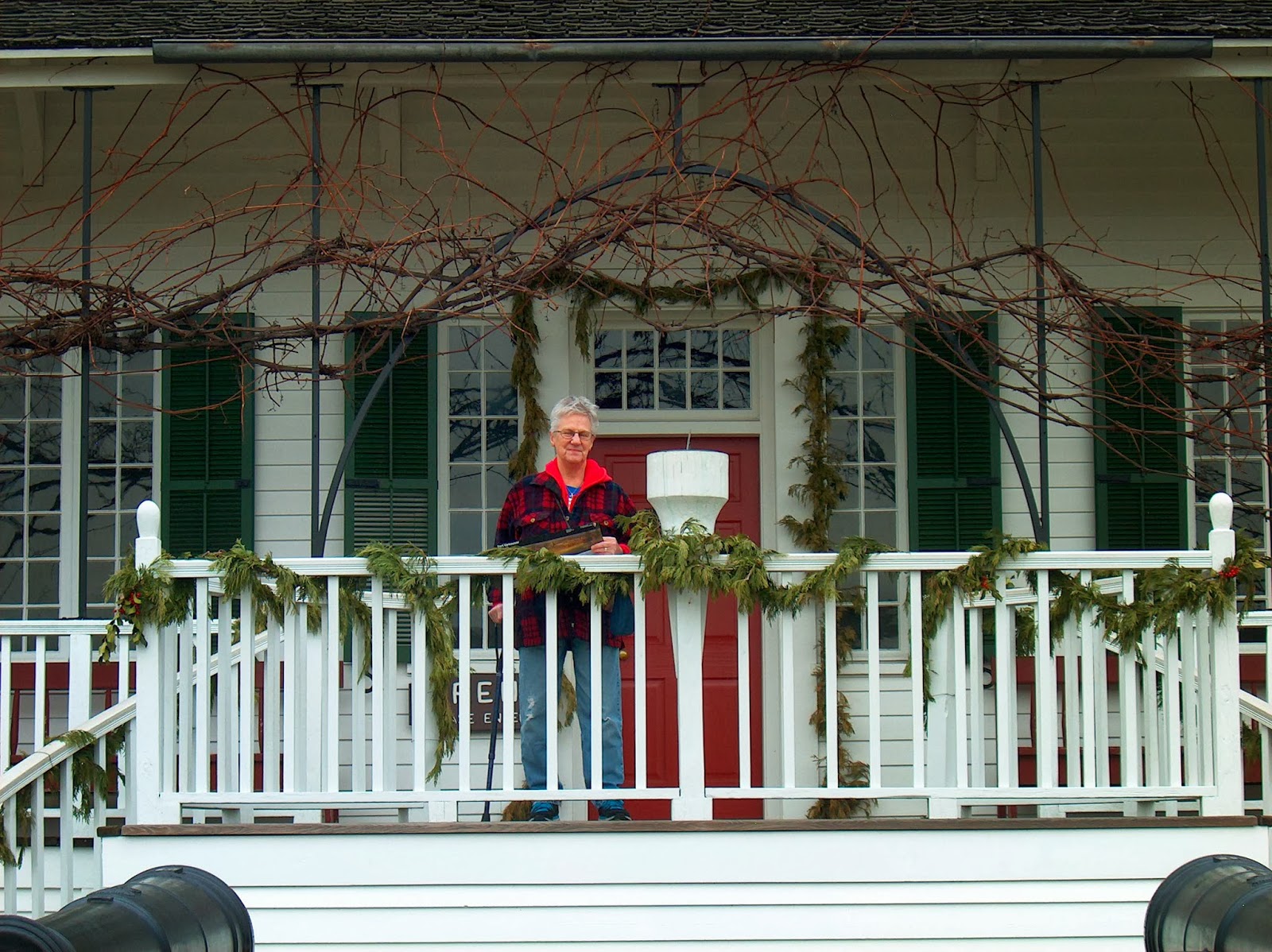In 1818 the United States and Great Britain, locked in a struggle for control, agreed to share access to the fur rich Oregon Territories. In 1825 Britain sought to anchor their claim by moving their Hudson's Bay Company headquarters to the new Fort Vancouver, on the banks of the Columbia River. Dr. John McLoughlin was instrumental in settling the area, which eventually became Oregon, Idaho,Washington and British Columbia. The company moved out in 1860, the era of the beginnings of the Oregon Trail settlers. The Fort burned completely to the ground in 1866. In 1947 archaeologists began digging up the remains of the foundations, and in 1966 reconstruction of some of the buildings was begun. The large house in the picture above was Dr. McLoughlin's residence and the hub of the social life at the Fort.
This Blacksmith Shop is well equipped and quite accurately duplicates the original shop. The volunteer blacksmiths here have mastered the iron works projects very well and do a good job explaining how it used to be, as closely as can be discovered.
Mr. Keith always loves to pose in the old outhouses. I can't break him of that habit! This one was next to the Blacksmith Shop.
The 1845 Bastion was built to protect the fort against threats and to fire salutes to arriving ships. It was three stories high; the top floor held eight three pounder cannons. In my reading, I don't find any evidence that there were Indian attacks or other enemies of any kind.
Officers Row is above the actual old Fort and is a tree lined street of great beauty.
As part of a national reorganization, the U.S. Army returned the headquarters of the Department of the Columbia from Portland Oregon to Fort Vancouver in 1878. Several new buildings were constructed on Officers Row, including this 1886 Queen Anne style home for the Department Commander. The most famous Commander to live here was Brigadier General George C. Marshall, who lived here with his wife Katherine from 1936 to 1938 while he was in command of the Third Division's Fifth Brigade and directed the region's Civilian Conservation Corps camps. Mr. Keith and I hope to return for a more in depth visit to historic Fort Vancouver when the weather is warmer and we can spend more time exploring.






No comments:
Post a Comment